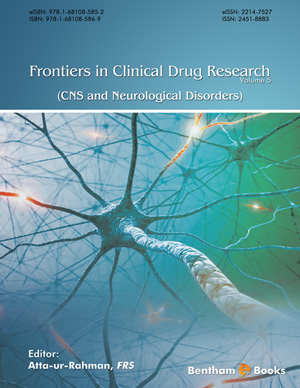Abstract
The N-methyl-D-aspartate receptor (NMDAR) is a glutamate receptor that mediates important physiological functions in the central nervous system (CNS). However, the overstimulation of this receptor is associated with neurodegenerative disorders, including Parkinson, Huntington and Alzheimer diseases. In this new millennium, diseases causing progressive neuronal loss and death have become more frequent and the current therapy still presents several adverse effects and does not block disease progression. In this chapter, we discuss the role of NMDAR in neurodegenerative disorders and its potential as a therapeutic target, the advances in the development of NMDAR antagonists and the contributions of molecular modeling in this field. NMDAR structure is already known allowing the use of molecular modeling tools for the development of new NMDAR antagonists. Studies involving the use of structure based drug-design methods as molecular docking and virtual screening for discovering new NMDAR antagonists were reviewed here; as well as the in silico evaluation of pharmacokinetic and toxicological properties. CNS drugs should be capable of effectively cross the blood brain barrier to be active and the early evaluation of the safety profile of these compounds is extremely important to reduce the time and costs to develop new drugs for neurodegenerative disease therapy.
Keywords: ADMET prediction, Central nervous system disease, Docking, Glutamate excitotoxicity, GluN2B antagonists, Molecular modeling, Neurodegenerative diseases, NMDA receptor, Structure-based drug design, Virtual screening.






















